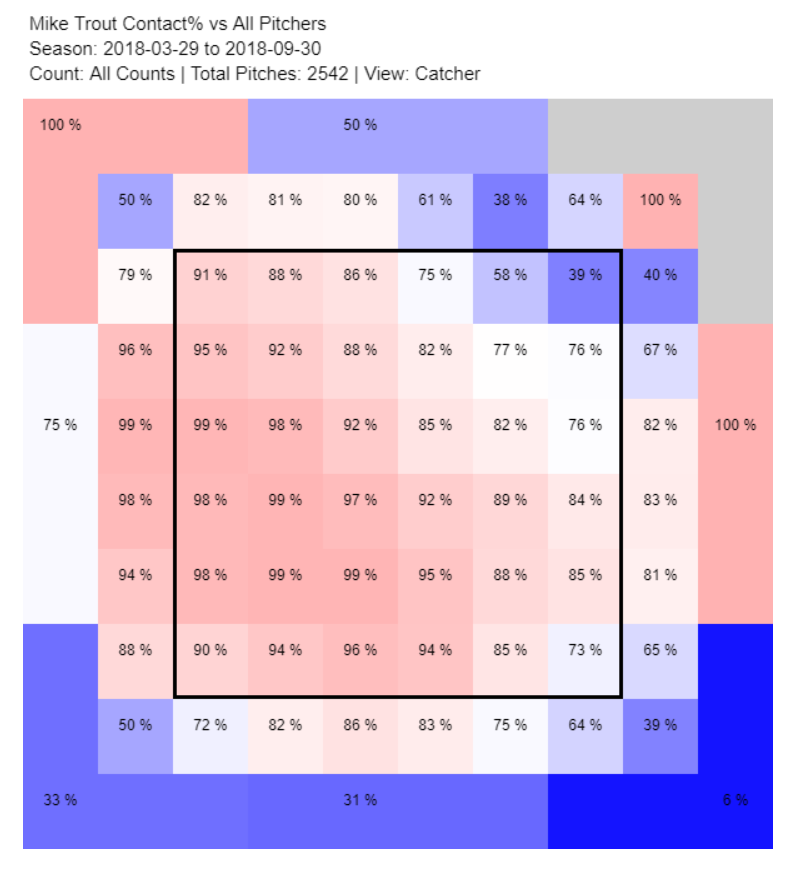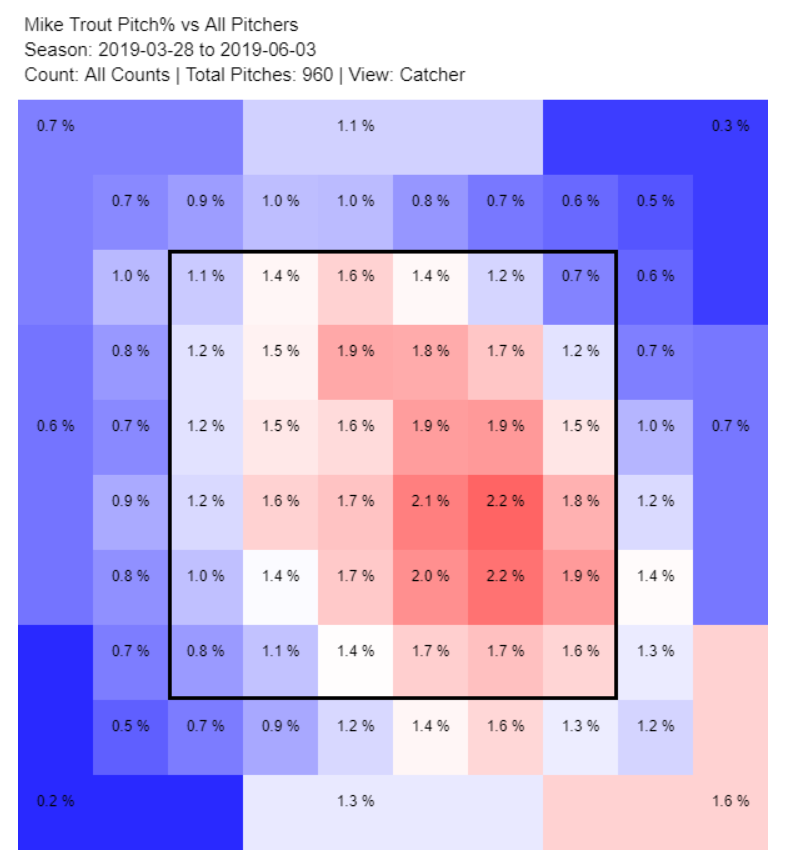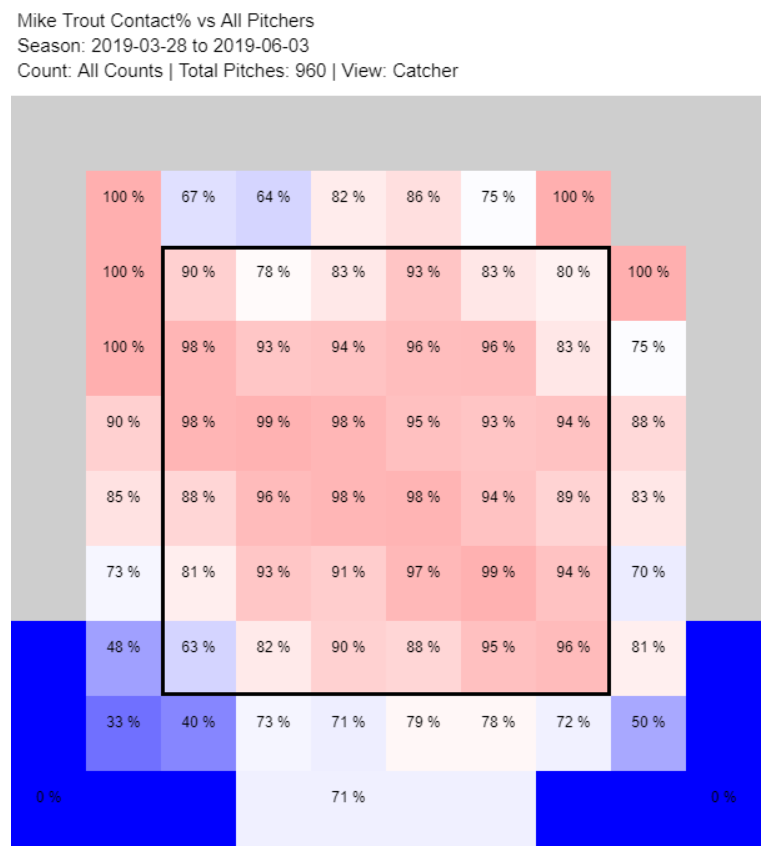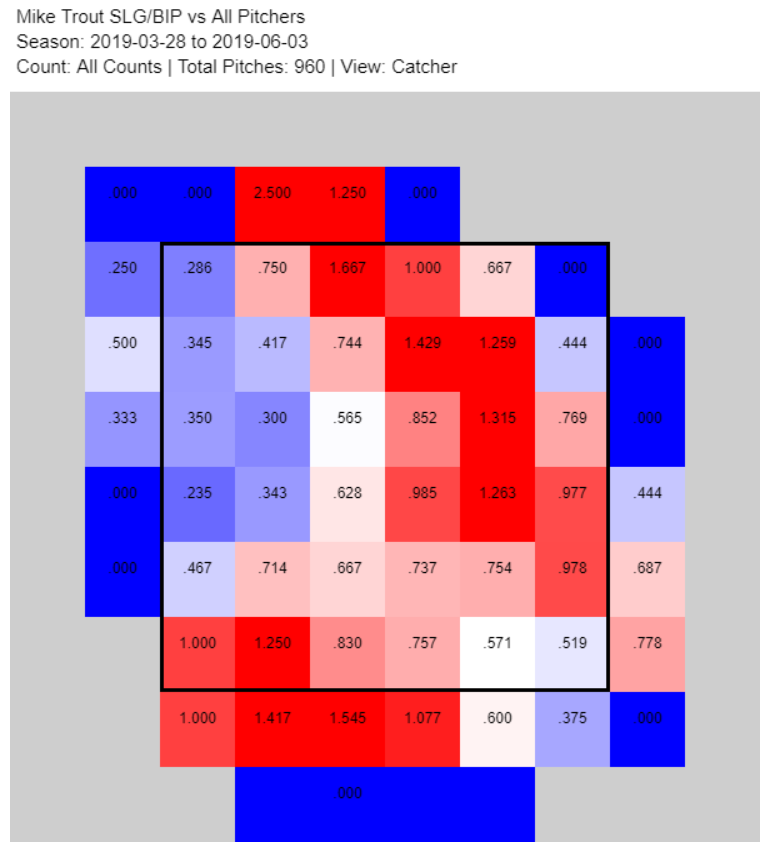Robert Stephenson looked done. After a rocky 2017 (4.68 ERA, 13.8% walk rate), he pitched poorly enough in 2018 spring training that the Reds sent him down to Triple-A Louisville. A vote of no confidence from the Reds, of all teams, is a bad sign for a pitcher. In 2016, the Reds finished 30th in pitching WAR; in 2017, they finished 29th. As Stephenson toiled in Louisville, Reds pitching wasn’t setting the world on fire — the 2018 team finished 26th in WAR, allowing more home runs than every team in baseball other than the Orioles.
When Stephenson returned to the majors at the tail end of 2018, things looked grim. In four appearances, he compiled a 9.26 ERA with more walks than strikeouts. His control, always a limiting factor, looked like it might be his undoing — even in a serviceable Triple-A season, he’d walked 12.2% of the batters he’d faced. As 2018 came to a close, the Robert Stephenson story seemed nearly written. Stuff-first pitching prospect can’t harness his command and never makes good on his promise? Seen that one before. As 2018 was Stephenson’s last option year, he started 2019 in the majors, but time very much felt short.
To understand why Stephenson’s middling major league career was something more than just a journeyman starter’s struggles, you have to look back to his prospect pedigree. In 2015, Kiley McDaniel rated him as the top Reds prospect. In 2016, Stephenson slipped all the way to second. At each turn, though, he showed every tool imaginable. His fastball touched the upper 90s. His curveball was drool-inducing. His changeup wasn’t quite there yet, but you could dream on it. He scuffled in a September call-up in 2016, but for the most part, he looked the part of a future impact arm.
If that was the whole arc of Stephenson’s career, it would be just another cautionary tale about toolsy high school pitching prospects. Sometimes all the stuff in the world isn’t enough, you could tell yourself. Player evaluation is hard! But fortunately for the narrative, that’s not where the story ends. The Reds had to find a place for Stephenson on their 2019 roster, so they turned to the bullpen. Control-challenged starters, after all, are often just relievers waiting to be discovered. What has Stephenson done with the opportunity? Here are the top five relievers this year when it comes to getting swings and misses.
Best Swinging Strike Rate Relievers
Swinging strike rates this high mostly just look like random numbers, but stop and think for a minute about what this means. A quarter of the pitches Josh Hader throws result in swinging strikes. Not a quarter of the swings — a quarter of the pitches. Stephenson isn’t far behind with his 21.6% rate, and that’s almost as wild. If Stephenson throws five pitches, one is getting a swing and a miss. Hader is a game-breaking curiosity, a mythical bullpen beast who strikes out half the batters he faces and swings playoff series. Robert Stephenson had a 5.47 career ERA coming into this season, and there he is in second place.
Sometimes, relievers are easy to spot. Take a two-pitch pitcher who needs a little velocity boost. Give them an offseason to work on throwing with maximum effort. There you have it, a reliever in a can. So did Stephenson add three ticks to his fastball and start maxing out that wipeout curveball scouts loved so much? Well, yes and no, but mostly no. Stephenson has added a pinch of velocity this year, but he’s not a completely remade pitcher or anything. In 2017 and 2018, his four-seam averaged 93.1 mph in starting appearances. In 2019, he’s dialed it up to 94.2 mph. Maybe he hasn’t gotten a huge velocity boost from relieving, but it’s still something.
When it comes to a secondary pitch, though, Stephenson has made a change. In his 2016 debut, he threw a fastball two thirds of the time, mixing in changeups and curveballs in roughly equal measure. In 2017, he threw a slider for the first time. The pitch was more of a power curve than anything else, thrown with a curveball grip and wrist action closer to a fastball, and it immediately became Stephenson’s best pitch. Batters whiffed at nearly half of the sliders they swung at; not too shabby for a pitch he’d never thrown before.
By 2018, Bob Steve had made the slider his go-to pitch, and analysts noticed. Though he didn’t record many major league innings in 2018, he threw 40% sliders when he did. Of the 99 sliders he threw, 18 drew swinging strikes, a 40% whiff-per-swing rate that beat anything he’d ever done with his curveball. The fastball/slider combination still didn’t produce great results that season, but the bare bones of an impact reliever were there; a decent-velocity fastball, wipeout secondary stuff, a willingness to throw a ton of secondary pitches.
That fastball, however, it’s fair to say wasn’t ready for prime time. By FanGraphs’ linear-weight pitch values, his fastball has been 38 runs below average in his career. It’s hardly better using Pitch Info classifications, at 34 runs below average. These linear-weight pitch values take balls in play, strikes, and balls into account, but the problem with Stephenson’s fastball is pretty straightforward — when batters swing at it, they destroy it. This isn’t a one-year thing, a small sample artifact, or anything benign like that. Every year he’s been in the majors, his results and expected results on contact have been objectively awful.
Bob Steve’s Fastball Results (on contact)
| Year |
wOBA |
xwOBA |
League wOBA |
| 2016 |
0.479 |
0.434 |
0.388 |
| 2017 |
0.432 |
0.466 |
0.392 |
| 2018 |
0.571 |
0.462 |
0.390 |
| 2019 |
0.524 |
0.434 |
0.410 |
As you can see, the fastball has been quite poor, even in 2019. Given how much his fastball has been shelled, though, Stephenson’s 2019 is even more impressive. He has a 3.96 ERA and a 2.56 FIP despite a fastball that essentially turns every batter into Cody Bellinger. How has he pulled off that trick? Well, he stopped throwing fastballs, that’s how. Take a look at the qualified relievers who have thrown the most sliders this year.
Want to limit the damage done on fastballs and leverage your excellent slider? Sometimes the solution is pleasingly straightforward — throw as few fastballs as possible, and replace them one-for-one with your best pitch. This play only works in relief, as you can’t exactly throw 60% sliders as a starter, but his slider is so good that even when batters know it’s coming, they can’t hit hit.
Stephenson’s slider is gorgeous when he throws it out of the zone. Jung Ho Kang surely has sliders on the brain here, but still bends the knee.
Keston Hiura manages to get the bat on the ball, but only barely, and the result is the same.
These are the kinds of sliders that end at-bats, and Stephenson is adept at hunting strikeouts with the pitch. He’s getting whiffs on 56% of swings against his slider, a frankly mind-boggling number. But as well as the slider plays as an out pitch, that’s not the only thing Stephenson uses it for.
When Stephenson first developed his slider in 2017, he used it in the way most pitchers use sliders. It came out late in counts as a hammer, a pitch that looked like a fastball early before falling off the table late. While he dabbled with it early in counts, it was largely a pitch to be used while ahead. This year, that dalliance with early-count sliders has become a full-blown romance. Stephenson is throwing sliders to open at-bats 62% of the time in 2019. If the count gets to 1-0, he still goes to his slider 43% of the time. 2-0? Still 42% sliders. On 2-1 counts, Stephenson throws 70% sliders. He’s using the pitch in every situation, whether it’s a traditional slider count or not.
This adjustment is a stroke of genius for someone who can’t afford to let batters tee off on his fastball. As a batter facing Stephenson, you desperately want to avoid a two-strike count, because a two-strike count against Stephenson’s slider is a sure way to end up in a Pitching Ninja GIF. Best, then, to swing at an early fastball. It’s the pitch you want to hit, after all. The next step in that game theoretical confrontation is for Stephenson to throw sliders in fastball counts, and either throw enough for called strikes or be deceptive enough that batters can’t just leave the bat on their shoulders.
Amazingly enough for a pitcher who came into 2019 with a 13.6% career walk rate, Stephenson has pretty good slider command. He’s locating 45% of his first-pitch sliders in the zone, enough that hitters can’t wait him out. His overall slider zone rate of 46% is comfortably better than average (43% for the big leagues as a whole). When he does miss the zone, he’s missing close — he already has nine swinging strikes on out-of-zone sliders to start at-bats this year, the most of any reliever and only three behind slider factory Patrick Corbin for most in the majors.
Though he throws the slider in the strike zone less often than his fastball, the slider has proven to be more effective at managing counts. For his career, he’s located 52% of his fastballs in the zone to open at-bats, a slim lead over the slider. The pitch generates almost no out-of-zone swings, though, which undoes the edge he gets from having more pitches in the zone, and that’s before we even get to what happens when batters do swing. When batters swing at fastballs, they might hit them, and with Stephenson’s fastball, you don’t want that. Take a look at Stephenson’s first pitch outcomes, both in his career prior to 2019 and in 2019.
First Pitch Outcomes
| Result |
2016-2018 |
2019 |
| Ball |
46.7% |
37.0% |
| Strike |
42.5% |
56.0% |
| In Play |
10.8% |
7.0% |
Those balls in play are mostly fastballs, and letting batters put first-pitch fastballs into play isn’t where you want to be when your fastball is as flat as Stephenson’s. Emphasizing the slider has moved all three results the way you’d like to see them move, and even if it’s a small sample size, it’s encouraging to see such promising first-pitch numbers. The league as a whole has a .364 wOBA after a 1-0 count and a .267 wOBA after 0-1. Those 13% of plate appearances that Stephenson has moved from the 1-0 or in play bucket to the 0-1 bucket are like facing Brandon Drury instead of Ronald Acuña 13% of the time — that’ll do nicely.
Maybe you’re a skeptic. Maybe you think that anything can happen in 25 innings, that the dead can walk and a minor leaguer can look like an effective reliever, if only briefly. Maybe you’d prefer to point to Stephenson’s 3.96 ERA and say that even if this is a new skill level, a high-3 ERA reliever hardly merits a deep dive. I don’t see that, though. I see a celebrated prospect who was legitimately not good enough to stick in the major leagues by doing what he’d done his whole life. I see that celebrated prospect making up a new pitch on the fly, throwing that pitch 60% of the time, and excelling in the major leagues with it. Robert Stephenson was a cautionary tale, and now he’s an impact reliever with a hellacious put-away pitch he can throw in any count. In what has so far been a frustrating Reds season, it’s great to see a former prospect make good.




